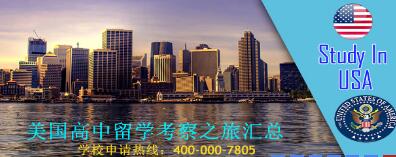首页 · ·
练习托福阅读为什么要使用ETS官方材料(上)?
发布时间:2015-06-08 来源:美国留学
对于每一种考试来说,真题都具有着它与生俱来的价值。真题对广大考生而言,是复习准备考试的宝典,它具有继往开来的指导作用。说它继往,因为它会真实全面地诠释以往考试的考查方向、考查重点、考查模式;说它开来,因为它会客观准确地昭示未来考试的考查方向、考查重点、考查模式。
托福考试也如此。据统计,在托福考试阅读题目中,词汇重合率可以达到80%以上。因此研习过去的真题,就是在做未来的考题。
目前,对于托福考试来说,所谓的真题就是OG和TPO(TOEFL PracticeOn-line),加之过去pbt(paper- basedtest)考试时遗留下来的真题,也就是老托福的题目。总共也就这三大类。我们一起通过对比来了解一下为什么要使用ETS官方材料。
那么首先我们先来了解一下现在市面上的阅读材料都有哪些。这里给大家列了表格:
当然除了以上材料,还有海量的参考辅导书目以及英语原版书籍杂志。在这就不一一赘述了。针对表格中前三者最具价值的ETS的官方资料,我们通过一个类比的方式来感受一下它对真正考试巨大指导意义
这个大可不必多说。TPO真题是唯一完全跟真正托福机考相一致的练习材料。无论是题目数量[42题]、时间限制[3篇/1小时]还是文章长度[700-800字],都跟真正考试无异。
我们以历史类话题为对象进行一个对比,把在历年托福考试中涉及到的历史题材的文章进行了如下归类
其中跟OGTPO真题重合的话题进行了标注:
各位看到上文中大量的重合的红色部分,就应该感觉得到,TPOOG这类材料的巨大指导意义了吧。
1、如下题目分类概述是根据OG的官方的要求和标准。这个标准原封不动的在TPO的题目设置中贯彻了。所以你会发现,只有在TPO的套题中才能到位的感受到与题目一致的设置思路。
2、题目背后蕴含的考查逻辑。我们用TPO34-1的阅读文章 IslamicArtandtheBook来举个例子。文章第4题是典型的细节题(事实信息题),众所周知这类题目是ETS的大爱。作为老师,应该也有所体会,讲解起来并不容易。
但是,让我们一起来调动大脑,开始思考。大家不妨先一起来感受一下ETS的看似无形的设题思路,生词已为各位标注。
题目如下:
Paragraph1:The arts of the Islamic[伊斯兰]book, such as calligraphy[书法]and decorative drawing,developed during A.D. 900 to1500, and luxury books aresome of the mostcharacteristicexamples of Islamic art produced inthis period. This came aboutfrom two major developments:paper became common, replacing parchment[羊皮纸]as themajormedium for writing, androundedscripts were regularized and perfected so that theyreplaced the angular scripts ofthe previous period, which because of their angularity were uneven inheight.Books becamemajor vehicles for artistic expression, and the artists whoproduced them, notably calligraphers[书法家] and painters, enjoyed high status,andtheir workshops were often sponsored[赞助]by princes and their courts. BeforeA.D. 900, manuscripts of the Koran[可兰经] (thebookcontaining the teachings of theIslamic religion) seem to have been the most common type of bookproduced and decorated,but afterthatdate a wide rangeof bookswereproduced for a broadspectrum of patrons[赞助人]. Thesecontinuedto include,of course,manuscripts of the Koran, which every Muslim wantedtoread, but scientificworks, histories, romances, and epic and lyricpoetry werealsocopied in finehandwriting and decorated withbeautiful illustrations. Most were made for sale on theopen market, and citiesboasted special souks (markets)where books were bought and sold. Themosque of Marrakech in Moroccois known asthe Kutubiyya, orBooksellers’Mosque, after theadjacentmarket. Some of the most luxuriousbooks werespecific commissions madeat the order of a particular princeand signed by thecalligrapher anddecorator.



